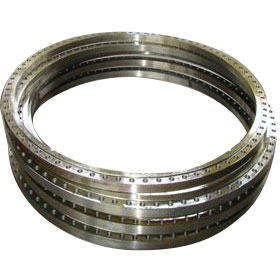The Importance of Wind Power Flanges in Renewable Energy
2025-03-22
As the world continues to shift towards sustainable energy sources, wind power has emerged as one of the leading solutions to combat climate change. Wind turbines, which convert wind energy into electrical power, are at the heart of this renewable energy revolution. A critical component that plays an essential role in the efficiency and reliability of these turbines is the wind power flange. In this blog, we will explore what wind power flanges are, their importance in wind turbine construction, and how they contribute to the success of wind energy projects.
What is a Wind Power Flange?
A wind power flange is a type of mechanical component used to connect different parts of a wind turbine. These flanges are typically made of durable materials such as steel or cast iron and are designed to ensure a secure, rigid connection between various turbine components, such as the hub, tower, and rotor. They are also used in the assembly of the gearbox, generator, and other critical turbine mechanisms.
Flanges are essentially circular plates with holes around the perimeter that allow bolts or other fasteners to hold them firmly in place. They serve as an integral part of the wind turbine’s structural integrity, enabling it to withstand the immense forces generated by the rotating blades and the natural environment.
The Role of Wind Power Flanges in Wind Turbines
Wind turbines are exposed to high levels of mechanical stress and environmental conditions, such as strong winds, temperature fluctuations, and vibrations. The proper functioning of a turbine relies on each component being securely fastened and able to withstand these forces. Wind power flanges play a pivotal role in ensuring that this happens.
Here are the key functions of wind power flanges in wind turbines:
1. Structural Integrity
Wind turbines consist of multiple moving and stationary components that must be securely joined. The turbine’s blades, tower, and nacelle (the housing containing the generator and gearbox) are all subject to significant mechanical stress during operation. Wind power flanges help maintain the structural integrity of these components by providing strong, stable connections that prevent them from shifting or separating under pressure.
2. Vibration Dampening
Wind turbines operate in environments where constant motion and wind forces create vibrations. These vibrations, if not properly controlled, can damage sensitive components like the gearbox or generator. Wind power flanges are often designed with vibration-dampening features to reduce the impact of these forces, ensuring the turbine operates smoothly and efficiently over its lifetime.
3. Safety and Reliability
In wind energy projects, safety is paramount. Wind power flanges must meet stringent standards to ensure the turbine is safe to operate, especially in challenging weather conditions. By providing secure connections between components, these flanges contribute to the overall reliability of the turbine, reducing the risk of mechanical failure or accidents.
4. Efficiency and Performance
The efficiency of a wind turbine depends on how well its components work together. A poorly designed or improperly installed flange could result in energy losses, vibrations, or misalignment that reduces the turbine’s performance. High-quality wind power flanges help maximize the turbine’s efficiency by ensuring all components are aligned and securely fastened, allowing the turbine to generate electricity optimally.
Types of Wind Power Flanges
There are different types of flanges used in the construction of wind turbines, depending on their application and location within the turbine. Some common types include:
1. Hub Flanges
These are located at the center of the turbine's rotor and are used to connect the blades to the hub. The hub flange needs to be particularly robust, as it must support the weight and aerodynamic forces of the rotating blades.
2. Tower Flanges
Tower flanges are used to join different sections of the wind turbine tower together. These flanges are large and designed to carry the weight of the entire turbine, including the nacelle, blades, and other heavy components.
3. Nacelle Flanges
These flanges connect the nacelle to the tower and facilitate the transfer of energy between the two. Nacelle flanges must be capable of withstanding high stress levels due to the weight and motion of the rotating components inside the nacelle.
4. Gearbox and Generator Flanges
The gearbox and generator inside the nacelle are critical for converting mechanical energy from the rotating blades into electrical energy. Flanges are used to connect the gearbox and generator to other parts of the turbine, ensuring their proper functioning and alignment.
The Benefits of High-Quality Wind Power Flanges
The performance and longevity of wind turbines depend on the quality of the materials and components used. High-quality wind power flanges offer several benefits:
1. Durability
Wind turbines are exposed to harsh environmental conditions, including high winds, moisture, and extreme temperatures. Durable flanges made from high-strength materials ensure that the turbine remains operational even under these challenging conditions, extending its lifespan and reducing the need for costly repairs.
2. Cost-Effectiveness
While high-quality flanges may have a higher initial cost, they ultimately help reduce maintenance and repair costs over the life of the wind turbine. By preventing mechanical failures and minimizing downtime, high-quality flanges contribute to the turbine’s long-term profitability.
3. Improved Performance
Wind turbines equipped with reliable and well-designed flanges experience fewer mechanical issues and operate more efficiently. This improved performance translates into increased energy production and a higher return on investment for wind energy projects.
4. Environmental Impact
By ensuring that wind turbines operate efficiently and reliably, wind power flanges help maximize the amount of clean, renewable energy produced. This plays a significant role in reducing the environmental impact of energy generation and supports the global transition to renewable sources.
Conclusion
Wind power is an essential component of the global shift towards renewable energy, and the technology behind wind turbines continues to evolve. At the heart of this technology are the components that ensure the stability, safety, and efficiency of these machines, and wind power flanges are among the most critical. These flanges provide structural integrity, reduce vibrations, and help ensure the turbine operates reliably in challenging conditions.
As the demand for wind energy grows, the importance of high-quality flanges in wind turbine construction becomes even more evident. By investing in superior materials and designs, manufacturers can help maximize the performance of wind turbines, making renewable energy a more sustainable and cost-effective solution for the future.



